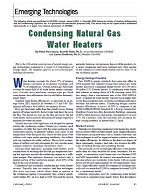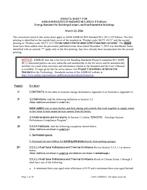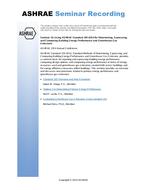ASHRAE Special Project SP43 has developed and experimentally validated a dynamic simulation model for analyzing the thermal performance and energy utilization of residential forced-warm-air heating systems. This paper, third in a series, describes the use of the model to compare various system and control options, with the objective of generating information for the Equipment Volume of the ASHRAE Handbook.
System component efficiencies and dimensionless energy factors are defined that describe the furnace, duct system, system-induced loads, and total system performance on an annual basis. These factors were generated by the SP43 model for over 40 example cases, selected to show the effect of system and control variables on overall performance. These variables include: furnace and venting types, installation location and combustion air source, furnace sizing, night setback, thermostat cycling rate, blower operation strategy, basement insulation levels, duct sealing and insulation, house and foundation type, and climate. Four house types were examined: a two-story house with basement, and a ranch-style house with basement, crawl space, and slab. Three climates were examined using ASHRAE WYEC weather tapes: Nashville, Pittsburgh, and Minneapolis.
Units: I-P
Citation: Symposium, ASHRAE Transactions, 1986, vol. 92, pt. 2B, Portland, OR
Product Details
- Published:
- 1986
- Number of Pages:
- 30
- File Size:
- 1 file , 2.3 MB
- Product Code(s):
- D-PO-86-13-2


